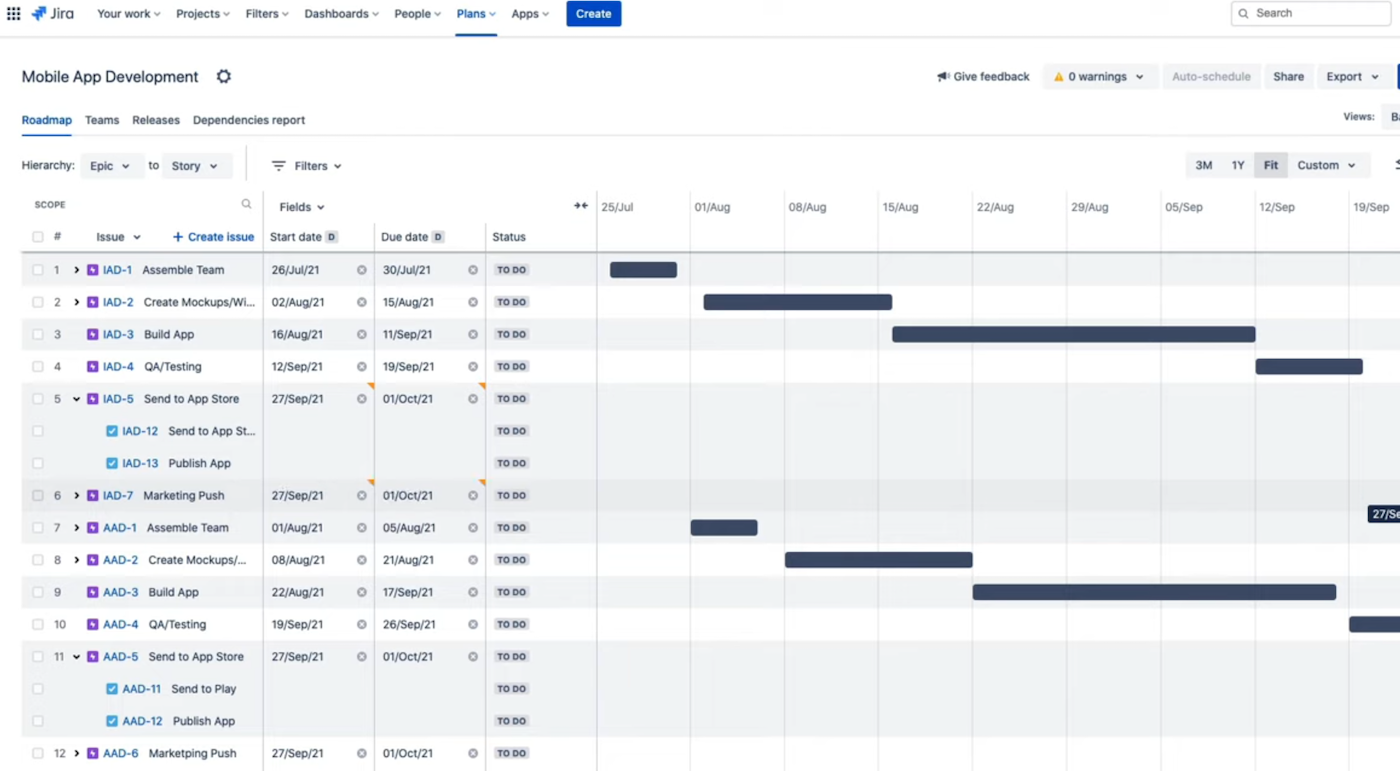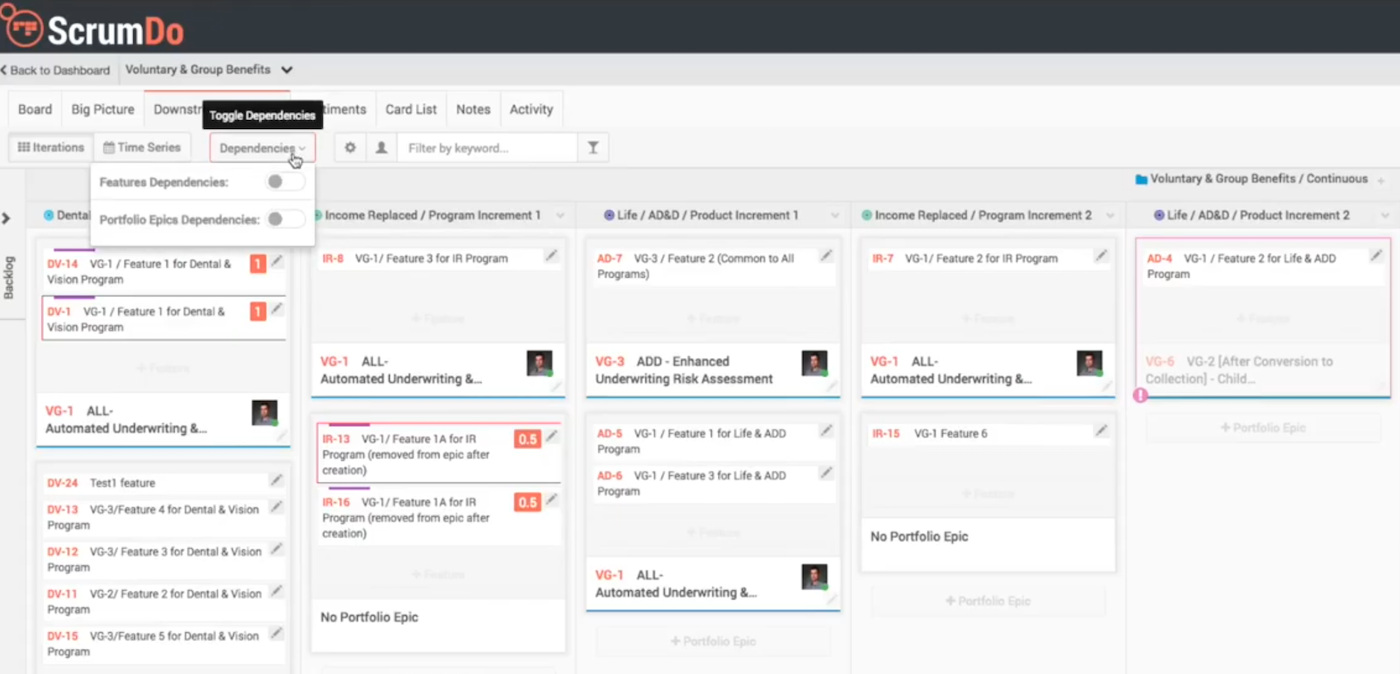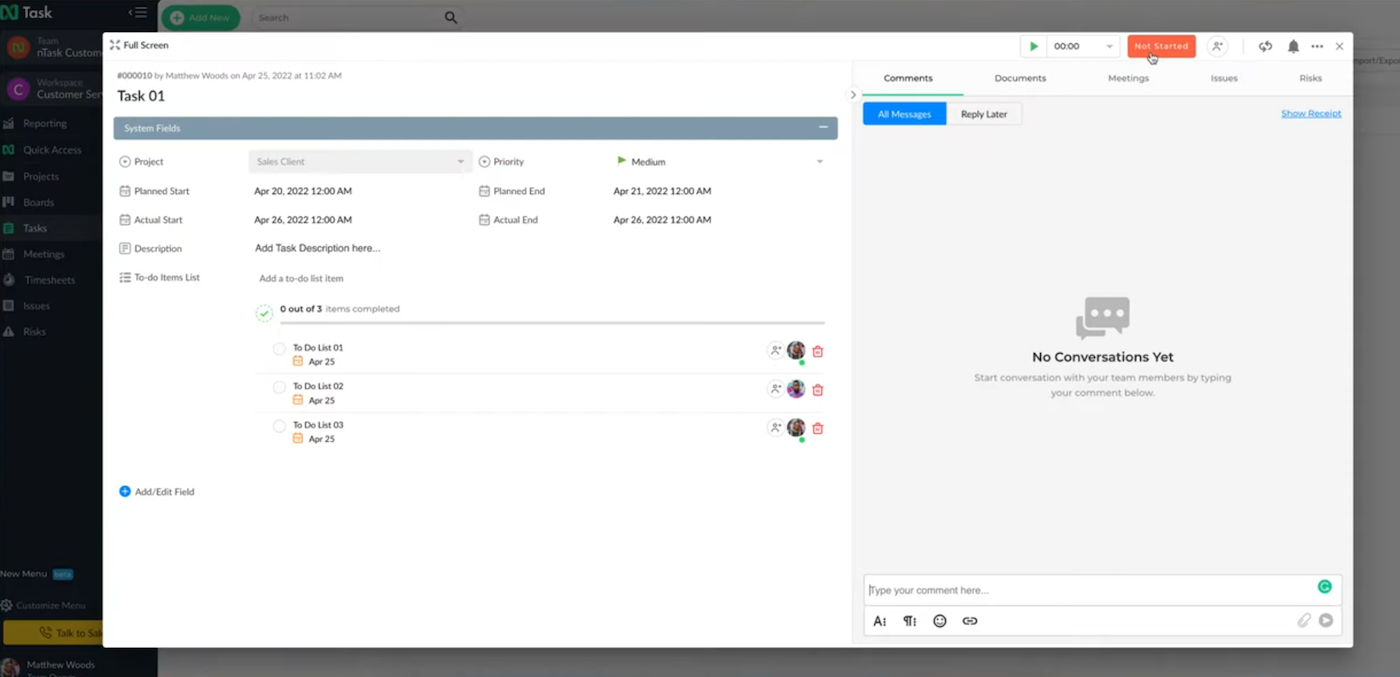Best Scrum Tools for Agile Project Management in 2022
Scrum is an important Agile project management methodology that can be applied to software development, sales, marketing, research, and other business functions. It helps teams navigate obstacles, streamline their processes, and generate value throughout their organizational workflows. Ultimately, Scrum supports flexibility in teams’ operations and increases efficiency throughout their project management.
To reap the benefits of Scrum, however, it’s important to choose the right Scrum tool that will support your organization’s unique needs. Consider your budget, goals, and the size of your team when comparing the best Scrum tools for Agile project management.
Best Scrum tools comparison
Below are some of the top Scrum software systems and applications, and a comparison of their features and capabilities.
Jira
Jira supports Agile teams throughout their software development process. It helps them with features to facilitate each step of their workflows, including work planning, progress tracking, product releases, performance reporting, and automation.
For example, Jira simplifies the project goal and development planning The software also lets users gain a clearer view of their work and progress through visualizations like the Burndown Chart, which automatically updates to track the work remaining for each project.

Axosoft
Axosoft’s Agile project management tool enables users to plan their sprints and releases with time estimations, item priority ranking, and progress monitoring. This allows team members to clearly see each aspect of their workflow progress so they can stay updated and informed on planned releases. In addition, with Axosoft’s Card View, users can visualize item statuses and progress.
Some of the special Scrum features included in all Axosoft plans include burndown charts to visualize releases, release planners for organizing releases based on the time and resources available, and stack item rankings for prioritizing tasks.
Furthermore, the capacity management tool helps teams ensure they can take on new projects. Capacity management is also supported ActiveCollab may sound like a collaboration product, but it contains features that support teams in their Agile project management.
For example, the tool provides many options for users to leverage automation throughout their workflow planning, such as task duplication for identical tasks, dependencies that designate relationships between tasks, and batch editing for making multiple repetitive workflow adjustments at once.
Active Collab does have collaboration features as well, like their in-app chat, commenting, discussions, notes, and customizable grouping functionalities, all of which help members communicate about relevant projects. The software also supports the needs of individual team members and team productivity planning with its time management and resource management features.
An excellent aspect of ActiveCollab worth mentioning, though, is the client collaboration features. For Agile Scrum systems, this feature is very helpful for facilitating client feedback and optimizing product development.

ScrumDo
ScrumDo is a work management platform that provides features to help teams plan their processes and manage their workflows based on the Scrum framework.
The software supports customized reporting profiles, and lets teams generate metrics relevant to their workflows on a team-specific or organization-wide level. Workflow monitoring and risk monitoring features are both contained within this tool, and users can develop custom risk monitoring measures for their workloads to support their specific needs. Risk-based alerting is another nice perk to the product as well.
Additionally, the tool supports each team member through its time allocation features that track the work capacity status per user. By tracking the performance data of team members, organizational leaders can improve their production planning.

nTask
nTask helps teams incorporate Scrum in their workflow processes nTask is great for maintaining quality control for projects, as its issue tracking and risk management tools keep teams informed on potential issues throughout the development process. Additionally, visualizations like Kanban boards and Gantt charts offer clarity The software’s collaboration features also support the Agile initiative, as users can communicate about projects and stay on the same page regarding any adjustments that may be necessary.

Craft.io
Craft.io offers tools and features that enable users to refine their production processes. Team leaders can use the solution to manage and track work progress and prioritize tasks for their team through the prioritization scoring feature.
The capability planning tool works as a resource allocation feature, as it allows leaders to view information on team member availability and resource availability. Then, they can easily make adjustments on evaluated work capability and adapt to unexpected changes.
Users can also utilize Craft.io’s Roadmapping tool to visualize connections between their organization’s objectives and key results. This solution helps teams make adjustments based on client input when it comes to agility in project management.
Users can customize and share their tailored Roadmapping views with their stakeholders to collaborate on product updates and gain more clarity on their production decisions. Users can even track their product’s deployment process based on the team’s progress easily Wrike provides many capabilities including task and subtask management, project and task approvals, and custom workflows. The product is flexible with various customization options, so team leaders can adjust their solutions to scale alongside their organizations.
Wrike’s Work Intelligence feature uses AI and machine learning technologies to provide real-time predictions of project issues and suggestions for resolving them. Users can easily stay on-task with project adjustments Scrum software comes with a wide variety of features, but it’s important to know which ones are the most beneficial for Agile project management. These include task management, release visibility, risk management, financial management, and resource allocation.
Task management
As with most project management software systems, task management and task tracking features are integral components.
These features enable team leaders to allocate tasks to each of their staff members to keep them on track. Many solutions provide the ability for leaders to assign priority to specific tasks as well, so staff members know exactly what actions deserve their time and attention.
In addition, task management and tracking features let users see their progress. Organizational leaders can view each user’s status and identify any productivity trends or bottlenecks.
Finally, users can also gain information about any task dependencies or relationships, so they can view the progress of those tasks and plan accordingly.
Thinking of adopting a dedicated task management tool? Learn more on TechRepublic: Task management vs. project management: Which is best for your team?
Release visibility
Release visibility and tracking features provide information to users about the progress of their projects and allow them to more easily predict the completion/release date of the final product. Some Scrum software tools provide project tracking visibility, enabling users to determine where they are in the development process.
However, more advanced features can help users gain an even clearer idea of when their products will be completed and ready to release. For example, Axosoft’s burndown charts and ship date estimator enable release visualization and help determine the progress of releases based on calculated velocity.
Risk management
Risk management and tracking capabilities are important aspects of Scrum tools. These features can help teams avoid delays in their project development process Some of these Scrum software tools, like Wrike, even provide suggestions to users of methods for resolving bugs and issues when they are notifying them of potential project issues. nTask also provides several helpful features for risk management.
For example, nTask’s risk matrix tool identifies relationships between the probability of a risk and its resulting impact. nTask also offers risk mitigation to minimize the negative impact of risks on user operations Risk management extends beyond Scrum. Learn more: IT Risk Management Guide for 2022
Financial management
While not all Scrum tools offer financial management features, they can be very beneficial for supporting Agile project management. They can help organizations create accurate budgets and determine the return on investment (ROI) for their projects.
By providing features that facilitate financial management and planning, organizational leaders can develop a clear alignment between teams and business objectives. As a result, this insight can help teams to manage their projects in a way that allows them to meet their overall initiatives.
For example, ActiveCollab provides a profitability analysis tool to help users determine the financial outcome of their projects Resource allocation features help organizations manage their projects’ time, assets, and effort. Several Scrum software solutions offer resource allocation features that focus on the workload side of resource management, so organizations can leverage the capacity of their workers appropriately.
This may involve keeping track of workers who have too much on their plate or are in need of more work in case tasks need to be reallocated to even out workloads. Workload resource allocation can not only help organizational leaders track the productivity of their workers but can also help reduce the likelihood of workers experiencing burnout.
Of course, resource allocation can involve managing an organization’s physical resources as well, like the supplies, tools, and other assets that are necessary to complete the project on time.
Learn more on Project-Management.com: Importance of Resource Allocation and Time Management in Project Management
What are the benefits of using Scrum software for Agile project management?
Utilizing Scrum as a framework for Agile project management can provide many advantages to your business or organization. These include collaboration, cost savings, and productivity.
Collaboration
Scrum systems also help organizations to improve client satisfaction and customer experience Scrum software products can save money on long-term project costs. For example, Scrum software tools can help teams determine the actual cost of their processes for easier budgeting. The software products can also reduce overhead Implementing a Scrum software tool into your Agile project management workflow can also simplify project management processes and speed up productivity. By refining work processes through the use of the Scrum software system, teams can avoid production obstacles that would otherwise slow down their work. Instead, they can get their projects done faster and gain more revenue as a result.
How to choose the best Scrum tool
To choose a Scrum software product that is suitable to your Agile project management needs, it is best to first identify which features would be most helpful for your organization’s processes. This should be primarily driven For example, suppose you are hoping to complete your organization’s projects more quickly. In that case, a software solution with both task and risk management features may be ideal. These features would help you refine your team’s workflow processes for greater speed and reduce risks that could occur within your project, thereOn the other hand, say you wish to refine your project processes in a way that will allow your organization to generate more income. In this case, a solution offering resource allocation and financial management features would be best. These software features could support your organization By determining the results that you wish to gain from your Scrum tool, you can identify those with the best features to optimize your Agile project management. Then, dig deeper into user reviews once you’ve narrowed your list to learn the first-hand experiences of other users with needs similar to yours.
Read more: Tips for Implementing Scrum Best Practices
